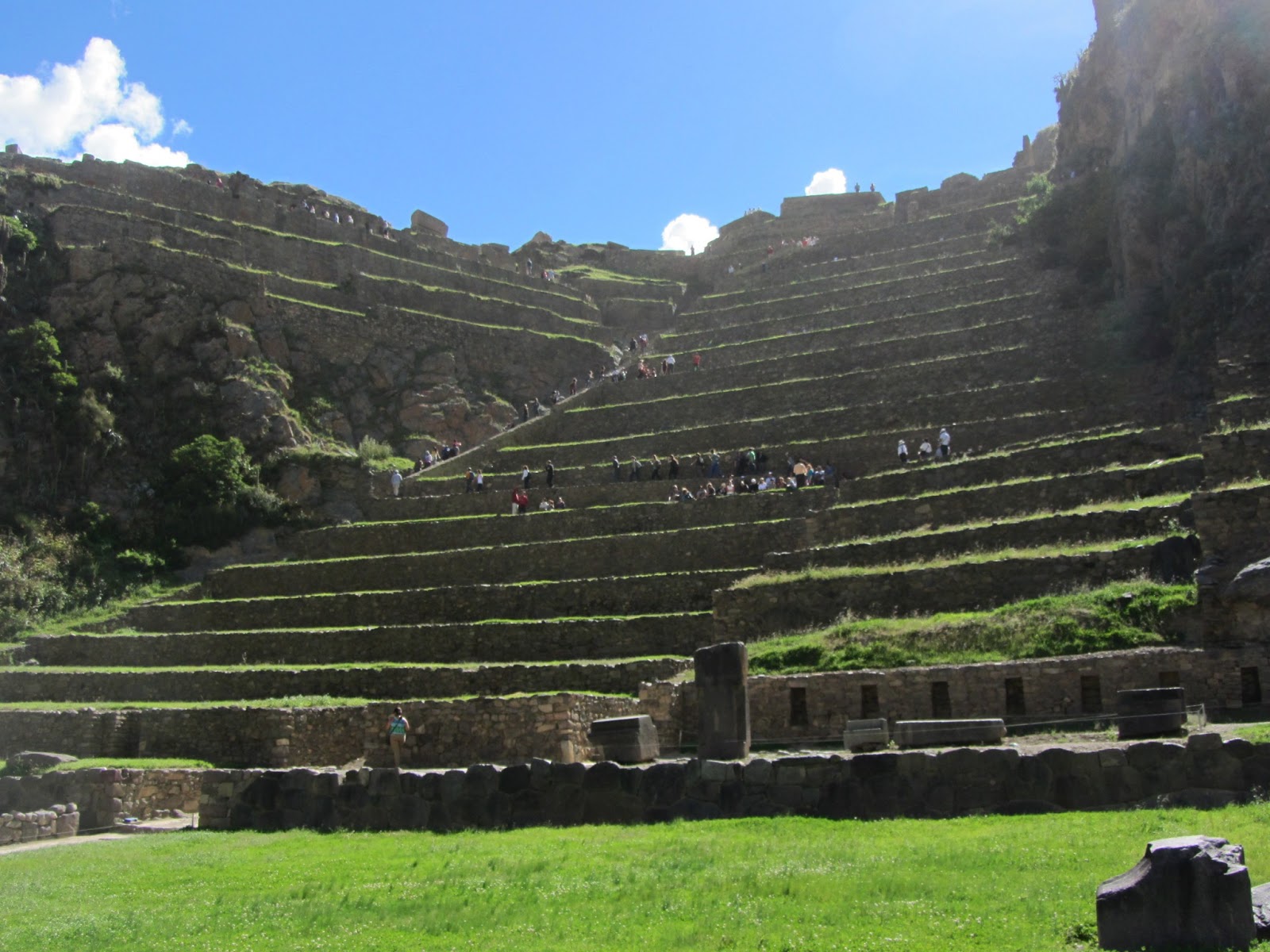This was a busy day of driving in and around the Urubamba Valley (also known as the Inca Sacred Valley), the real heartland of the Inca empire. The mountain scenery was gorgeous, and we stopped at a variety of different sites, both modern and historic.
The first stop was at a small animal sanctuary that takes in injured animals and nurses them back to health, or just permanently look after animals that wouldn't be able to survive on their own. In our time in Cusco the theme of the Inca trinity totem of the snake (lower plane), the puma (middle plane) and condor (higher plane) had come up multiple times, and here we got to see a local puma and some condors.
Next was on to the small mountain village of Huchuy Qosco to learn more about camelid crafting. We got a bit of a lesson on the steps from shearing, cleaning, dyeing and weaving llama and alpaca wool, and got to experience the difference between those and the much rarer vicuña. Vicuña are a closely related type of camelid that has much softer, golden wool. The reason it's so rare is that unlike alpacas and llamas, vicuña can't be domesticated. Their wool is in such demand that the population was almost wiped out by hunting (which is such a waste for something that grows back) but luckily conservation has helped the numbers rebound substantially. The town was also interesting just for getting a taste of how people live away from the bigger cities.
In the afternoon we visited a pair of Inca ruin sites, the second of which is in Ollantaytambo, where we'd spend the night. The ruins continued the theme of amazing stone-work (especially since everything is carved and moved by hand), sweeping mountain views, and lots of walking up hills (yay!).
We stocked up on a few final supplies in Ollantaytambo (I bought a rain poncho) in preparation for the big hike, which would begin the following day.
The first stop was at a small animal sanctuary that takes in injured animals and nurses them back to health, or just permanently look after animals that wouldn't be able to survive on their own. In our time in Cusco the theme of the Inca trinity totem of the snake (lower plane), the puma (middle plane) and condor (higher plane) had come up multiple times, and here we got to see a local puma and some condors.
Next was on to the small mountain village of Huchuy Qosco to learn more about camelid crafting. We got a bit of a lesson on the steps from shearing, cleaning, dyeing and weaving llama and alpaca wool, and got to experience the difference between those and the much rarer vicuña. Vicuña are a closely related type of camelid that has much softer, golden wool. The reason it's so rare is that unlike alpacas and llamas, vicuña can't be domesticated. Their wool is in such demand that the population was almost wiped out by hunting (which is such a waste for something that grows back) but luckily conservation has helped the numbers rebound substantially. The town was also interesting just for getting a taste of how people live away from the bigger cities.
We stocked up on a few final supplies in Ollantaytambo (I bought a rain poncho) in preparation for the big hike, which would begin the following day.














No comments:
Post a Comment